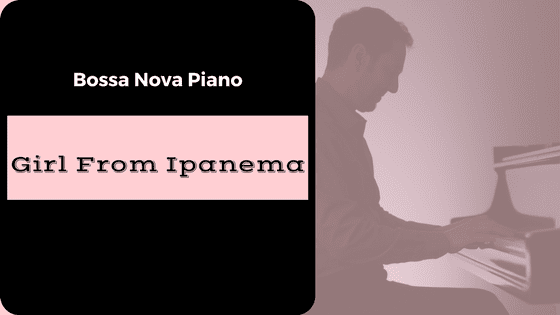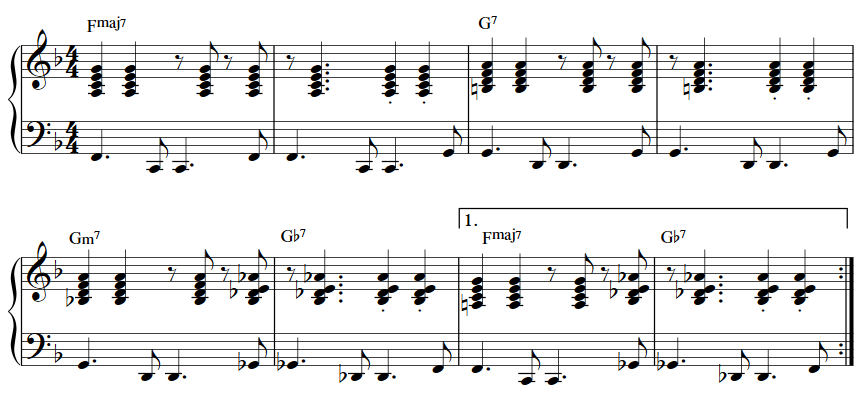Bossa Nova Piano - Girl From Ipanema

Bossa nova piano playing is but one of many different styles that we piano players need to practice - but what a fun and challenging style of piano it is! Bossa nova is a style of Brazilian music and (in the jazz world) is often characterized under the catch-all label of "latin jazz." The most distinctive aspect of bossa nova piano playing is the rhythm, which makes it an excellent topic for studying comping. And that's what we'll be looking at in this article - bossa nova piano comping using the classic tune "Girl from Ipanema."
Bossa Nova Piano - The Left-Hand Rhythm
The whole trick to mastering the bossa nova is being able to play the rhythm. When broken down to individual parts the rhythm is fairly simple. The challenge is trying to layer these two rhythms (left hand and right hand) over each other.
Let's take a look at the first 8 bars of "Girl From Ipanema."
The bass line will be played by the left hand and follows some very basic "rules":
- The bass line is a simple and recurring rhythmic figure;
- The bass line is built on the root and 5th of the chord;
- The bass line anticipates chord changes (more on this in a moment).
Let's take a look at the left hand bass line and rhythm and examine the 3 "rules" above.
As you can see, the rhythm of the bass line is a dotted-quarter note followed by an eighth note. Each chord is outlined by playing the root of the chord and then down to the 5th of the chord (you can also play up to the 5th of the chord). Notice that when the chord changes, the last eighth note of the previous measure anticipates that change. For example, in measure 2 the last note of the bass line is a 'G' even though the chord above is still F major. But the bass line anticipates this chord change.
Practice this bass line rhythm slowly with your metronome.
Bossa Nova Piano - The Right-Hand Rhythm
The right-hand part has its own distinct rhythm. In the example below we've used rootless voicings in each of our chords. Notice that the right-hand rhythm is a 2-bar phrase that repeats over and over. Practice this comping rhythm slowly with your metronome, being as precise as possible with your rhythmic placement. It will be very important to have each part (right hand and left hand) fully learned before trying to put hands together.
Bossa Nova Piano - Playing Hands Together
Now comes the challenging part - putting hands together. The trick here is to start slowly, perhaps even just focusing on two measures at a time. Be very careful to count and play the rhythms precisely. As you improve start to gradually increase the tempo, using your metronome. Notice the interlocking aspect of the two parts, creating a rhythmically dense texture. This is the hallmark of the bossa nova rhythm. Go through the rest of the tune, applying this comping pattern to the other chords. Once learned, practice comping along with a recording.



